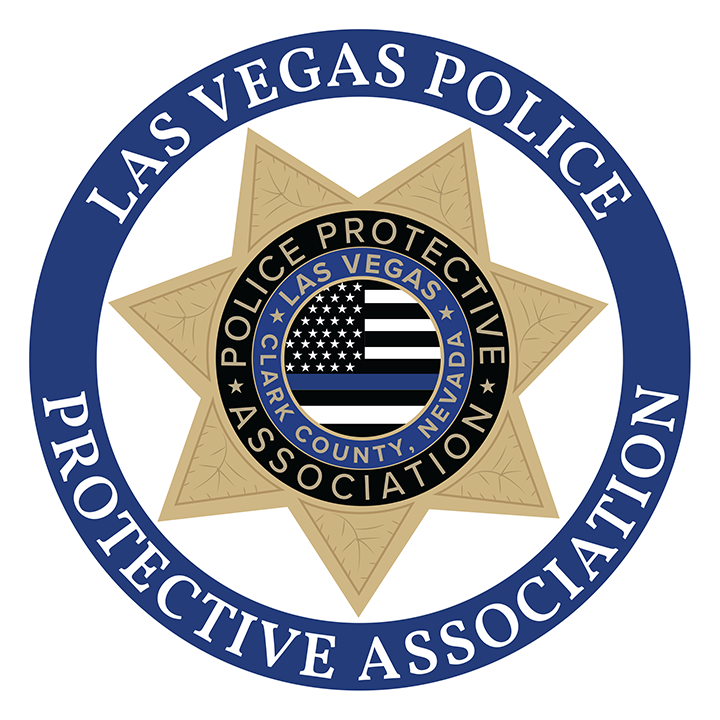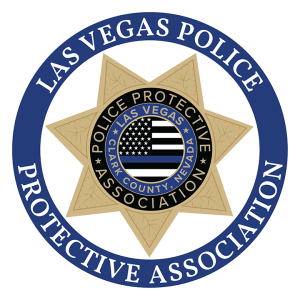Shootouts, grim sights, daily stress, public scrutiny – police work is a mental battlefield. How do you fix the tortured mind of a cop?
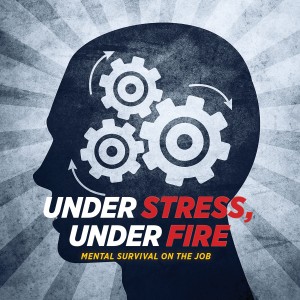 On April 12, about 30 Metro cops headed northeast of Las Vegas to Cliven Bundy’s ranch to prevent a potential bloodbath. They’d been called out to help keep the peace between Bureau of Land Management (BLM) officials, who were trying to round up Bundy’s cattle, and protesters, who’d gathered to support Bundy and chase away the BLM. The dispute had started over grazing rights and unpaid fees — but then it turned ugly. Militiamen flaunting weapons. Anti-government activists making threats. The BLM was in over its head; it called in the cavalry.
On April 12, about 30 Metro cops headed northeast of Las Vegas to Cliven Bundy’s ranch to prevent a potential bloodbath. They’d been called out to help keep the peace between Bureau of Land Management (BLM) officials, who were trying to round up Bundy’s cattle, and protesters, who’d gathered to support Bundy and chase away the BLM. The dispute had started over grazing rights and unpaid fees — but then it turned ugly. Militiamen flaunting weapons. Anti-government activists making threats. The BLM was in over its head; it called in the cavalry.
“We didn’t show any fear that day,” Las Vegas Metropolitan Police Sergeant Tom Jenkins would later tell 8 News Now’s George Knapp. “But I’ll tell you, in the back of our minds, we thought that could be our last day on earth. If it went bad.”
There were people on the scene who were looking for a reason to shoot a cop, Jenkins said. A simple car engine backfiring would have been enough to set off a gunfight. News video showed one rifle-wielding protester saying, “It’s going to happen sometime. Might as well happen now.”
In the end, the release of Bundy’s cattle defused the situation. Saving lives was more important than being right, law enforcement officials said.
Less than two months later, Jerad and Amanda Miller, who’d spent just enough time at the Bundy Ranch to be photographed by reporters before being kicked out for Jerad’s illegally carrying a firearm while on parole, walked into CiCi’s Pizza on Nellis and Stewart and shot two Metro cops to death. Officer Alyn Beck was 41 and left behind a wife and three children; Officer Igor Soldo was 31 and left behind a wife and baby. The Millers went on to kill a civilian, Joseph Wilcox, at a Walmart across the street from CiCi’s and were both killed in a gun battle with police.
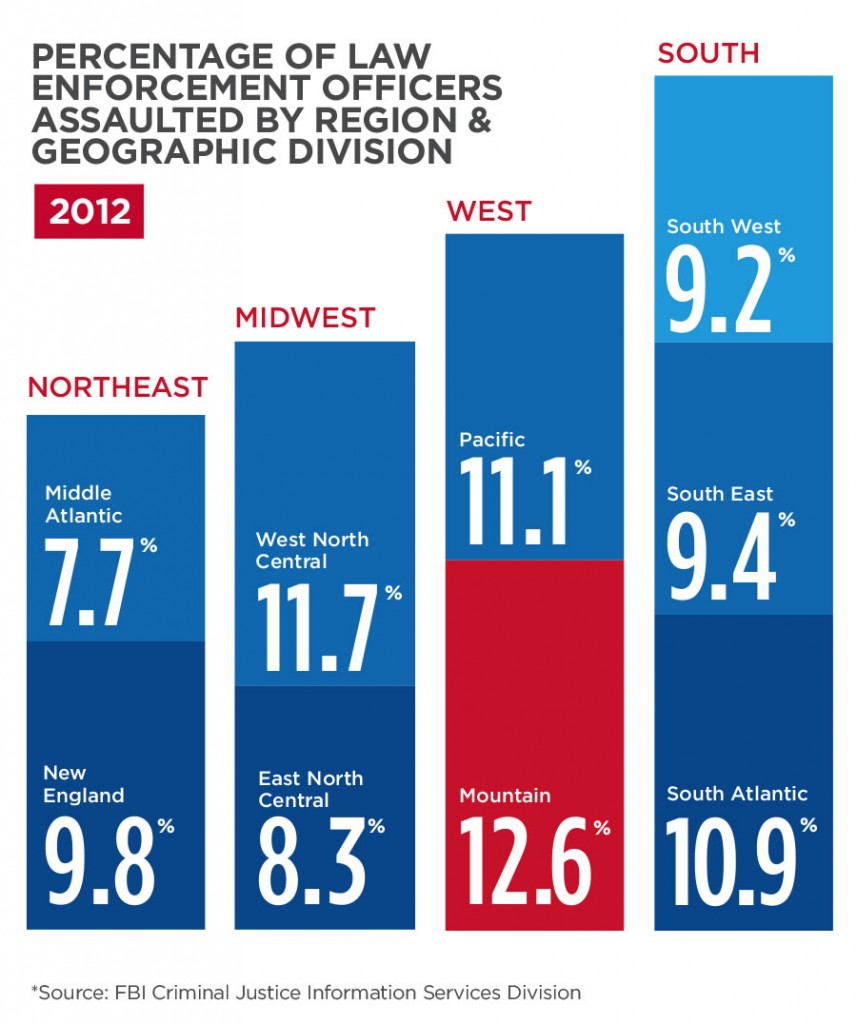
In the wake of the Millers’ rampage, the buzz of anti-law-enforcement sentiment stirred up by the Bundy Ranch standoff was drowned out by an outpouring of public support for police. Citizens created an impromptu memorial at CiCi’s, covering the sidewalk in front of the pizzeria with flowers, candles and mementos. Radio stations, restaurants — even a tattoo parlor — held fundraisers to benefit the families of Beck and Soldo. The Injured Police Officers Fund gathered so many donations that it was able to give each of the officers’ wives a six-figure check.
Another two months later, in early August, Ferguson, Missouri, Police Officer Darren Wilson shot Michael Brown, an unarmed 18-year-old black man. Several weeks of public protests followed, reigniting national discussions about race and police use of force. In North Las Vegas, around a hundred people gathered for a peaceful vigil and rally. But on social media, police-haters churned up the rage, creating hash tags such as #ENDTHEPOLICE to push their message.
In the space of four months, the pendulum of public sentiment about the police seemed to swing from hate to love and back again.
“People don’t want you there till they need you,” says Brian deBecker, a detective with the Las Vegas Metropolitan Police Department. “Then you can’t get there fast enough. It’s just the nature of the job. It’s the nature of the relationship between the public and the police. It’s always been that way. … But it’s worse now.”
Southern Nevada cops say they’re a little more nervous lately than usual. They pull up to stoplights wary of the drivers to their right and left; some have started packing a lunch to avoid eating out while on duty, as Beck and Soldo were doing when they were ambushed. It may just be a low point on the roller-coaster relationship the police have always had with the public, but it’s another stressor in a job that was already rife with them. Besides Beck and Soldo, two other local officers, Harold Byron Twigg and Michael Sutton, have died this year. Both committed suicide.
However, a movement is underway to help cops better cope with the unique pressures of their job. Individuals and organizations are trying to raise awareness about the emotional perils of policing and the need for more comprehensive wellness programs. At the same time, younger officers are breaking down cultural taboos — about talking about stress, anxiety and grief — that may have hampered past generations. But in the current climate of increased scrutiny, and hostility, much more could be done.
Trouble Brewing
I would guess that, in my career, I’ve been to 50 to 100 suicides. There are a lot in this town and, as a sergeant, you have to go to all of them (with your unit). And this one summer day, we had five. … One was a 13-year-old boy who killed himself over algebra. He was failing algebra. I remember the call coming up on the computer, and I could feel those emotions coming up. … I could have called someone. I could have called any other sergeant, and they’d handle it. But what would I say? “I’m feeling a little emotional today. Can you go handle this suicide?” So I told myself, “Hey, I’m going to get there, and my part won’t take five minutes.” … When I get there, the officer is waiting outside, which is odd when it’s 115 degrees. And he says, “Hey, Sarge, this is what I got: Third room on the left, 13-year-old male, got his dad’s .45, put it in his mouth.” … When I go inside, there’s probably 10 or 12 people in the kitchen, and they’re moaning and making sounds like wild animals, you know, probably the way it would sound at my house if my Boo-Bear blew his brains out. Because the top of this kid’s head is gone. … And I remember them looking at me and (my) feeling like they thought I would fix it. Now, I’m sure they didn’t actually think that, but that’s how I felt. And I wanted to say, “Don’t look at me like that. There’s nothing I can do.”
 This is former Metro Sergeant Clarke Paris’ recollection of the day seven years ago when his pot boiled over. In his metaphor of police officer stress, every cop starts with an empty stew pot. Over the course of his career, things go into the pot: contact with domestic abuse victims you’re unable to help; insults from angry speeding-ticket recipients; negative reviews by supervisors; missed promotions; fights with a spouse. If you’re lucky, you retire before your cop stew boils over.
This is former Metro Sergeant Clarke Paris’ recollection of the day seven years ago when his pot boiled over. In his metaphor of police officer stress, every cop starts with an empty stew pot. Over the course of his career, things go into the pot: contact with domestic abuse victims you’re unable to help; insults from angry speeding-ticket recipients; negative reviews by supervisors; missed promotions; fights with a spouse. If you’re lucky, you retire before your cop stew boils over.
Paris wasn’t so lucky. During the time of the incident described above, he was suffering an emotional breakdown, for which he eventually sought help. After just a few months of counseling, he worked through the crisis. He spent five more — much happier, he says — years on the force before retiring.
Metro Lieutenant Erik Lloyd, who is the treasurer of the Injured Police Officers Fund, remembers arriving on the scene of his fellow officer Donald Charles Weese’s fatal traffic accident in 1992. While en route to a gun call, Weese had collided with a civilian vehicle and spun into a traffic light pole.
“I was on duty that night and I had to go to the scene,” Lloyd says. “I had been in the Academy with (Weese) just a few years earlier. … He was a massive guy — 6’5″, 260, a body builder. I saw him in the vehicle. Seeing him reduced to the way he was, it was humbling, the power of a car accident. I had to hold a sheet up while they did the Jaws of Life to get his body out. I had to shield his body from the media.”
DeBecker will never forget the call he responded to several years ago about a toddler’s body in a dumpster. It was a little girl, whose mother and mother’s boyfriend had beaten her to death and then placed her in the garbage bin. “She was dressed up and had her stuffed animals around her, as if her mom was putting her to bed,” he says.
Looking back on his cop stew moment today, Paris says, “I knew if I got shot but lived, my peers and boss would say, ‘I’m glad Clarke got help.’ But nobody was shooting at me. I was dealing with stuff that’s normal on the job. Why do we call these events ‘normal’ when they happen to a cop? If another person went through that, they wouldn’t be able to forget it for weeks.”
Gruesome crime scenes aren’t the only potential sources of trauma that cops encounter on a regular basis. According to the FBI’s most recent uniform crime report, 12.6% of law enforcement officers in the Mountain West (eight states, including Nevada) were assaulted in 2012 — the highest percentage of any region in the U.S.; 2.4% higher than the national average. About a third of all assaults nationwide happened while officers were responding to disturbance calls (such as bar fights and family quarrels); nearly 28% of all assaults resulted in injuries. As for fatalities, the National Law Enforcement Officers Memorial Fund counts 12 total in Nevada from 2004 through 2013: five from auto accidents, four from shootings and one each from beating, drowning and falling.
National firearms-related fatalities are up 63% this year over the same time last year, according to Steve Groeninger, senior director of communications for the Memorial Fund. That percentage was poised to go up, he added, due to some officers being in critical condition from gunshot wounds as he spoke.
Sympathy for cops can be a tough sell. One problem: The number of civilians killed by law enforcement officers easily outpaces that of officers killed by civilians. In Nevada, that ratio is 65 to 4 from 2009 through 2013, according to Fatal Encounters, a website created this year to track officer-caused civilian deaths, and the Memorial Fund. (Note that eight of the civilians killed by officers during this period are unarmed, according to Fatal Encounters’ reports.) Another problem is cases of corruption, racism and excessive use of force among certain departments and officers, which garner heavy media attention.
And besides, don’t cops know they’re signing up for a risky job? They do. In fact, that’s part of the career’s appeal for some — especially early on. Paris says most young cops will tell you they wish they could do it for free on their days off. But, over time, the gusto diminishes. In some cases, the accumulation of car accidents and dead bodies and threat of bodily harm begins to take a toll.
Several studies have linked alcoholism to the occupational stress of police work, and some evidence indicates cops experience high rates of domestic abuse and suicide as well. “Forty percent of the police do not get help for their problems,” writes Neal Trautman in the introduction to his 2005 textbook Police Work: A Career Survival Guide. “Almost half of that 40% will assault their children or wives. Nearly 10% of that half will either kill themselves or be killed by a member of their own family. … Contrary to popular belief, stress harms more cops than criminals do.” (Police suicide numbers are disputed and difficult to verify, because the FBI and Department of Justice don’t collect data on them.)
Why doesn’t that 40% get help? What happens to them between the early embrace of risk and the eventual crush of stress? The making of cop stew is a slow, almost invisible process that even the cops themselves aren’t aware of. Post-traumatic stress disorder doesn’t only come from one major incident, Paris says. A sense of impending doom combined with helplessness to avert it (the hallmarks of trauma) can build up over time with repeated exposure to stressful and violent events. Police psychologists are increasingly studying this phenomenon.
Another factor is a cop-specific catch-22 that also stems from the appeal of the profession. In the introduction to his book, Trautman asks, “What type of person would choose to face daily animosity and ridicule? Who would want to work the long, miserable hours of midnight shift, stand in the rain or cold and direct traffic or live with the discomfort of wearing a bulletproof vest during the summer?”
Some will cite financial security and prestige, but almost all answers include some variation of, “To help people and make a positive difference in the community.” In other words, the field attracts idealists.
“A lot of these individuals coming in are young, and they think they have their cape and badge and they’re going to change the world,” says Sergeant Tom Harmon, the director of the Police Employee Assistance Program, Metro’s peer-support group.
Now, put these young, idealistic people in a job where they’re repeatedly exposed to the worst aspects of society. It’s a recipe for internal conflict, says Douglas Craig, a clinical psychologist who specializes in police and public safety and teaches at the Adler School of Professional Psychology in Chicago.
“Cops learn quickly that the more emotionally invested (in their jobs) they are, the more challenging it is to maintain their composure,” Craig says. “A way to compensate for the trauma they experience is to check out. It’s a way to cope. I think the general community doesn’t see that. They say, ‘They look like jerks. They talk to me in a staccato way. They see everyone as future perpetrators of crimes.’ They don’t see that the more a cop cares about the well-being of others, the less able he is to perform his job.”
While emotional disengagement may seem like a professional necessity in law enforcement, it may also stand in the way of personal well-being. Stoicism can mask repressed, unresolved issues and bleed into life outside the job. Officers often say that their job, unlike others, can’t be left at the office at the end of the day. They’re always cops. For some, this means always working, always maintaining the stiff upper lip.
“That’s something ingrained in law enforcement,” Harmon says. “There’s an underlying thing: You still feel like you have to be tough. We’re geared toward helping the world. There will never be enough emphasis on training officers to look in the mirror and say, ‘I need to start by taking care of that person, because then, I can be the cop I want to be, the mommy or daddy I want to be.'”
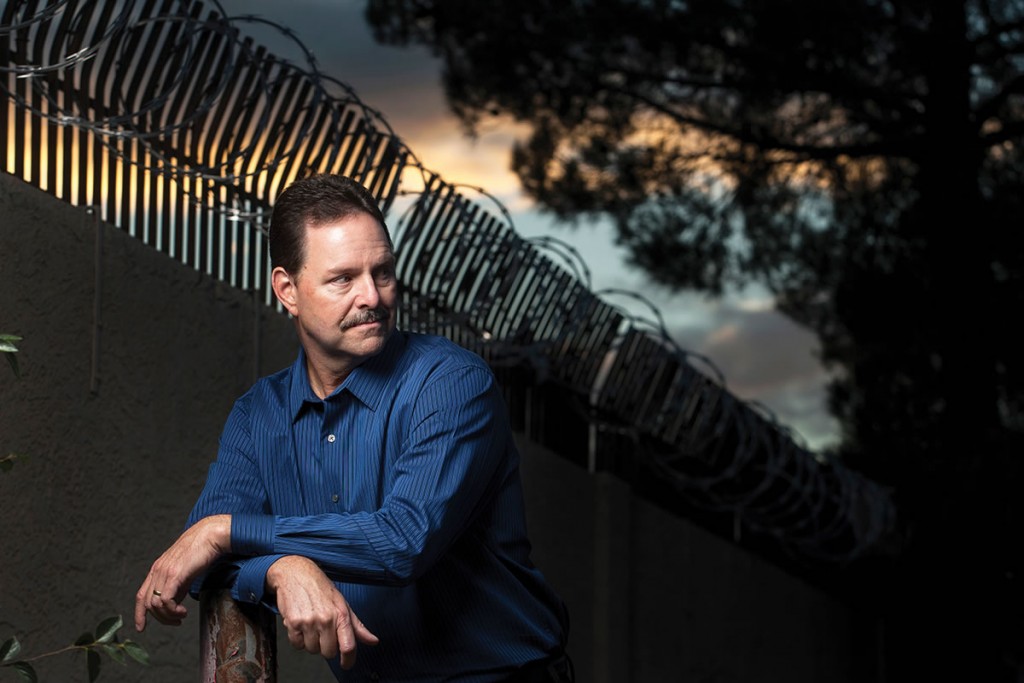
Toughening Down
Detective Brian deBecker sits at a table in one corner of a Las Vegas coffee shop, facing the door. Over the years, he’s worked various divisions of Metro, including a six-year stint on patrol, the job that police veterans portray as the most demanding and yet most rewarding. Now, deBecker is with a special sex offender unit, so he’s in street clothes. His steady hazel eyes are a little tired, but hopeful. An occasional tic interrupts his otherwise relaxed manner: Reaching his right hand under his jacket, toward his left side, he quickly scratches his ribs through his T-shirt. It could have something to do with the habit of carrying a gun there. DeBecker’s been a cop for 24 years.
In that time, he’s seen his share of action. His first of five shootings came while he was still in field training, when a man brandishing a knife rushed him and his partner. In another incident, while he was on patrol alone at 3:30 in the morning, a suspect he’d casually stopped pulled a gun out of his waistband and started shooting. DeBecker says he’s what cops call a “shit magnet”: Trouble finds him. He believes this is because he’s proactive on the job, looking to fight crime instead of just cruising around killing time.
“I love what I do,” he says. “As I get closer to retirement, I don’t look forward to it as much as I used to.”
But he was looking forward to retirement a couple years ago when his entire life seemed like a shit magnet. His crisis was more personal than work-related. In 2011, the mother of two of deBecker’s children, among whose family he counts a handful of his closest friends, died. A year and a half later, he lost his 9-year-old son to a rare form of cancer.
Add this to the usual pressures of being a police officer, and deBecker is a poster child for police stress. And yet, he’s doing OK. He doesn’t drink too much or abuse his family or consider killing himself. How has he fared so well?
 Maybe, partly, because of age and personality. “I guess it’s just how life goes,” he says. “I’ve learned that the simpler you can make life, the easier it is.” He doesn’t get worked up about the Department politics that drive so many other officers crazy. He has a healthy work-life balance. And he spends a lot of time with family, focusing on the daughter he still has at home and the older one living on the West Coast. But deBecker has also had help. He acknowledges the role that the Police Employees Assistance Program, or PEAP, has played in his healthy state. They’ve reached out to him not only after each of his critical incidents on the job, but also as soon as they heard news of his personal crises. In fact, deBecker says, it was PEAP who called to tell him of his ex-wife’s passing while he was traveling out of town. They wanted to make sure he heard the news from a friend, rather than on the evening news.
Maybe, partly, because of age and personality. “I guess it’s just how life goes,” he says. “I’ve learned that the simpler you can make life, the easier it is.” He doesn’t get worked up about the Department politics that drive so many other officers crazy. He has a healthy work-life balance. And he spends a lot of time with family, focusing on the daughter he still has at home and the older one living on the West Coast. But deBecker has also had help. He acknowledges the role that the Police Employees Assistance Program, or PEAP, has played in his healthy state. They’ve reached out to him not only after each of his critical incidents on the job, but also as soon as they heard news of his personal crises. In fact, deBecker says, it was PEAP who called to tell him of his ex-wife’s passing while he was traveling out of town. They wanted to make sure he heard the news from a friend, rather than on the evening news.
Metro’s confidential peer support crisis intervention program began in 1984 when former officers Ed Jensen and Jerry Keller (who went on to become Clark County Sheriff) convinced former Sheriff John Moran that the Department needed to offer an outlet for officers to deal with the aftermath of critical incidents. In its 30 years, it’s grown not just in staff, from two to seven full-time employees, but also in acceptance. Harmon’s team is routinely called to critical incidents such as shootings and fatal car accidents, and, more and more often, supervisors on a crime scene will elect to have PEAP there in noncritical incidents too, when they feel there’s trauma potential for the officers involved. PEAP staff helps the officers through the shock and its immediate aftermath. In addition, any employee of Metro, civilian or sworn, can call PEAP any time for help — whether the matter is job-related or not. And supervisors can refer PEAP to unit members who they believe are in need of assistance (although it’s up to the officers themselves to accept the help). PEAP representatives are trained in peer counseling, not psychological services. They don’t diagnose disorders or prescribe treatments. If someone needs more than a sympathetic ear, PEAP refers him or her to a therapist.
This month, Harmon retires after 20 years with PEAP. Lead Coordinator Melissa Causey, who has 14 years of experience of her own on the team, says the departure of Harmon — who is practically synonymous with PEAP — will be tough, but she expects the program will continue to thrive. She helped organize Metro’s first Wellness Week, which took place in early November and included an FBI workshop on stress management, Paris’ seminar on PTSD and suicide prevention, and a fitness fair. She hopes to make the event annual and expand on it next year.
“Officers are required to maintain 24 hours of training per year, and they’re always looking for classes to take,” Causey says. “We’re looking for additional tools to give them, wellness skills.”
“We live in a world where there are so many priorities,” Harmon adds. “Paying attention to that one area (stress management) is a challenge because of everything else they need to do to learn their job. There will always be more that needs to be done in that area.”
Indeed, only a small fraction of Nevada’s law enforcement job training is spent on self-care. Metro’s Police Academy, for example, includes around 800 hours of training per officer. Of that, recruits get one hour on health and wellness; one hour on stress management; one hour on the impacts of policing; a two-hour video on emotional survival; and a three-hour class by PEAP on officer-involved shootings. Eight hours total.
Leading organizations have begun to admit that law enforcement agencies are falling short when it comes to mental health services and taking steps to remedy the problem. The International Association of Chiefs of Police worked with the Department of Justice’s Office of Community Oriented Policing to bring together experts and stakeholders for a national symposium in July 2013. Named “Breaking the Silence,” it addressed “the mental health stigma within law enforcement as well as the critical issue of law enforcement suicide,” according to the resulting report and website, where departments can get resources for developing their own internal programs.
One such program that’s been held up as a model is the San Diego Police Department Wellness Unit, which Police Chief William Lansdowne founded in 2011 in response to a spate of officer misconduct allegations, including drunk driving, domestic violence and sexual assault. At the time, Lansdowne said the department may have allocated too few resources for employee well-being.
The SDPD Wellness Unit isn’t that different from PEAP. Located off-site from the police department, it is staffed by four police officers and oversees chaplains, peer counseling, a crisis hotline and addiction recovery support groups. It also coordinates with a contracted psychological services provider. In the year following its establishment, journalists from the local ABC News affiliate reported that the Wellness Unit had made 352 contacts with department and family members, successfully heading off countless behavioral problems before they happened.
“Back when PEAP started, I felt like it was ahead of the curve,” deBecker says. “For many years, police work was: You’d go to work, get in a shooting and go home. There was no outlet to talk about it. I don’t know what I would’ve done without follow-up.”
Still, more can be done, believes Minddie Lloyd, Erik’s wife and the director of the Injured Police Officers Fund. Through her 18-year marriage and the support she’s offered the spouses and other family members of killed and injured police officers, Minddie Lloyd has taken a personal interest in officer wellness. Like Clarke Paris, she believes law enforcement trauma still isn’t accepted and understood broadly enough, and she’d also like to see more awareness and training related to the role of the family, beyond the few optional hours offered during the Academy and continuing education.
“A lot of these spouses love being married to cops, and their kids come first, but there isn’t a connection between them,” Lloyd says. Too many men, she believes, won’t talk to their wives about what’s going on, because of the fear of being misunderstood or a burden; some wives don’t want to hear it, either.
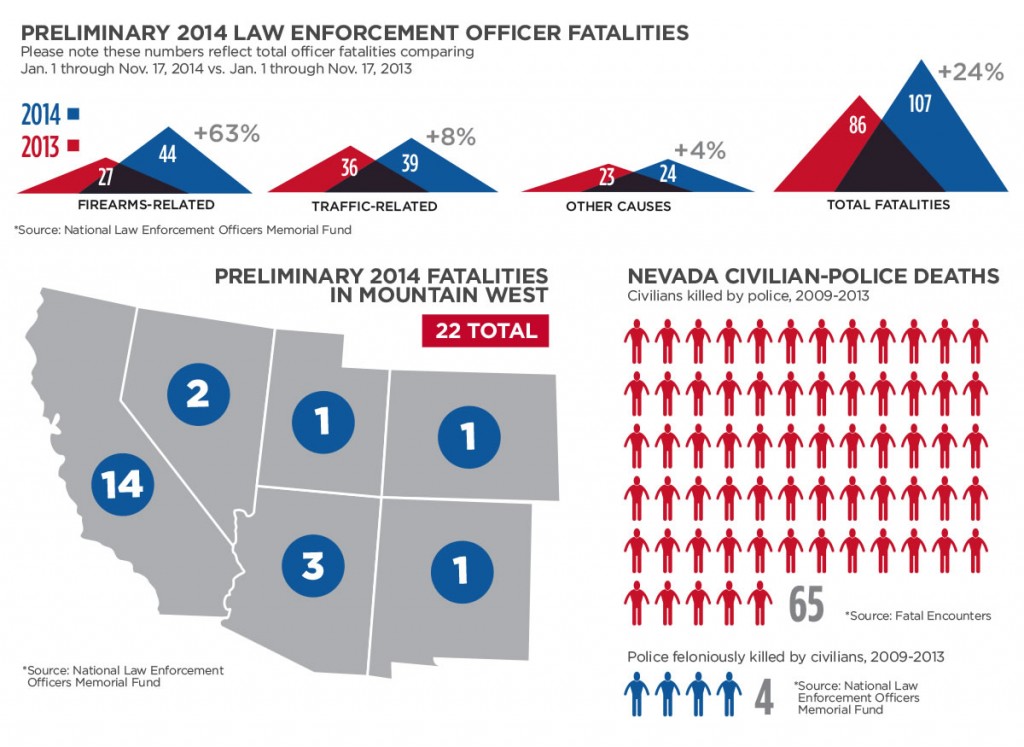
Erik Lloyd adds that police thinking on work-life balance needs to evolve, a concern his colleagues echoed. Discouraged by the discomfort and stigma experienced when socializing with civilians, many cops fall into the trap of only hanging out with other cops. Too often, their preferred way to unwind is with a drink.
“After a while, that’s all you do: drink and tell stories to other cops,” says former Metro Officer Robert “Bobby G” Gronauer. “It’s always best to get away and have friends outside the Department, people you can talk to who aren’t cops. And you have to know how to go on vacation — more than two weeks — and really go away when you go away. These guys just want to work all the time. It’s not good.”
“Chicago police has a furlough program that’s been successful,” says Douglas Craig, the Adler School psychologist. “You get 30 days off once a year. … I think it would help more to have greater resources for departments to provide healthy space and support to use paid leave for self-care. I’m not bashing police departments; the majority of large P.D.s see the need for them, but we’re in the infancy of seeing the importance of those services play in the functioning of departments themselves.”
Shifting Culture
North Las Vegas Police Officer Ann Cavaricci murmurs a line of code into her radio, flips on her sirens and floors the gas pedal of her black-and-white Ford SUV. On her way to an armed robbery at a mobile phone store, she calmly notes drivers’ failure to move out of her way. Zigzagging through a maze of cars blocking an intersection, she resumes her story about the stressors she’s faced in her job — a mix of those that every cop deals with and some that are unique to women. Arriving at the crime scene, she parks near the entrance to the strip mall where the phone store is located and hops out, murmuring more code into her radio and drawing her gun. Posted at a tree in sight of the store’s front door, she waits for backup, as the suspect may still be in the area. Her fellow NLVPD Officer Shane Forsberg, who’s recovering from gunshot wounds sustained October 7 in a traffic stop gone bad, undoubtedly hovers in the back of her mind. Other officers soon arrive and within 15 minutes, they clear the store and surrounding area. No one is hurt; the robber is long gone with a few hundred bucks in cash.
In his seminar, Paris touches on sexism in law enforcement, paraphrasing one commonly cited source of frustration among females: “If you have short hair, then you must be a lesbian. If you have long hair, then why are you a cop?”
A pervasive undercurrent of machismo in cop culture can undermine both men and women. Women have to work harder to earn their peers’ respect; but they’re also more likely to have an outside support network. If a woman cries at work, she’s seen as weak; if she doesn’t, she’s trying too hard. Either way, though, it’s considered less shameful than a man crying. In short, nobody has it easy when it comes to stress management.
But that culture of stoicism is shifting. Cavaricci — at 34, the youngest of the 10 officers interviewed for this story — displays her femininity unabashed: She wears makeup, has long blond hair and a French manicure, and carries her water in a pink Victoria’s Secret bottle. She balances appearing as strong and authoritative as her male counterparts with using her more feminine skills — one moment drawing her gun and shouting, “North Las Vegas Police! If you’re in there, come out with your hands up!” into a church where an intruder has tripped an alarm; the next, having a motherly talk with a young boy who’s walked out into a busy street (albeit in a crosswalk) without heeding oncoming traffic.
“I like interacting with the community,” Cavaricci says. “I think it’s important to let people know that we’re approachable.”
Although Cavaricci has availed herself of NLVPD Employee Assistance Resource Representatives’ (EARR) services to vent fear and frustration during her 10 years on the job, she says, she has no problem talking about work with her husband, a Metro traffic cop, and mother, who’s proud of her career choice. Like a majority of cops, Cavaricci loves her job and is in good mental health.
Older officers find their younger peers more open to counseling and less bothered by things (e.g., same sex relationships) that would’ve raised eyebrows in old-school locker rooms.
Harmon says PEAP has seen a steady rise in need, from 15 to 20 after-hours callouts for emergencies per year in the mid-’90s, to 65 to 75 such calls today. It’s not unusual for his team to make 10,000 contacts a year now, including everything from a five-minute conversation to an all-day intervention. He believes the increase is due in part to the growth of Southern Nevada’s population and police force, and in part to rising acceptance of counseling services.
“Now that I’m back on patrol, I’m 47 and I’m in briefing, I see 23-year-olds who are like me back when I started,” Erik Lloyd says. “When I was their age, I used to think, ‘Man those guys are old.’ I look at these kids now and think, ‘Man, these guys are really good cops.’ They’ve been exposed to more through the Internet. They’re more on the ball than we were back then.”
The nature of police work is changing, he says. There’s more emphasis on community-oriented activities, such as Metro’s monthly First Tuesday public forums P# 3836 at area commands, occasional Coffee with a Cop socials at cafés around town and the Every 15 Minutes anti-drunk-driving campaign in local high schools. Police psychologists applaud such efforts, insisting that they’re the key to building mutual cooperation and understanding between the police and public.
“Vegas used to be rough and tumble,” Lloyd says. “Now, I have 17 officers at Southeast who have body cameras.”
Perhaps because so much of their lives are online, younger officers seem to embrace public accountability for their actions. “If you talk to people who’ve been on the job for a long time, there are more rules, a closer look at what they’re doing,” says PEAP’s Harmon. “Rightfully so. Even when we’re doing a good job, there need to be checks and balances to make sure we’re doing the right thing. With a lot of authority comes a lot of responsibility.”
Some feel there’s much work to be done in this regard. “Holding a barbecue once a month isn’t going to fix the systemic problems,” says Kelly Patterson of Nevada Cop Block, a group whose goal is to draw attention to use-of-force issues and police accountability. Referring to the highly contentious killing of Erik Scott outside a Costco store in 2010, Patterson says, “Everybody saw how they were covering things up. People spent about a year reforming the coroner’s inquest, working through the system, and as soon as the election was over, the new management came in and overthrew it.”
It’s up to recently elected Sheriff Joe Lombardo to manage this controversy now, while meeting the day-to-day demands of running a 5,000-person force. Observers hope that PEAP and EARR won’t get lost in the shuffle, and that Lombardo will support their efforts to expand wellness services.
“The harder the job gets,” Harmon says, “the more they need us.”
This article originally appeared in the December 2014 issue of Desert Companion (desertcompanion.com). Reprinted with permission.
